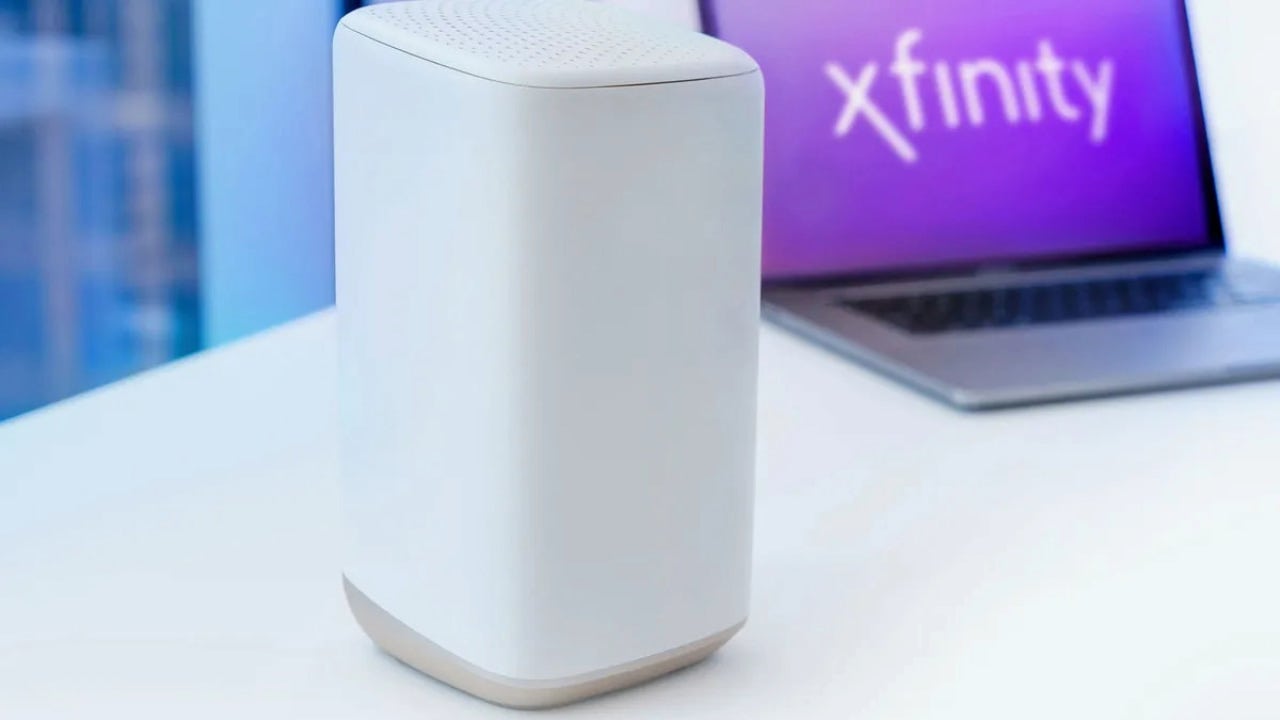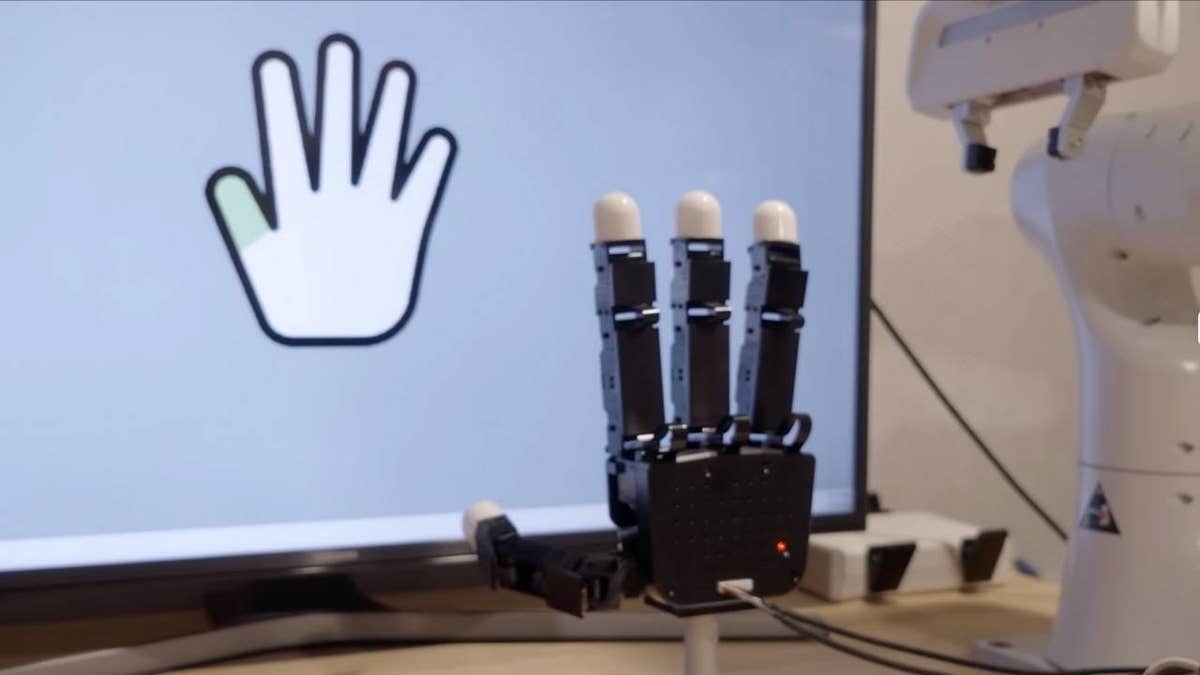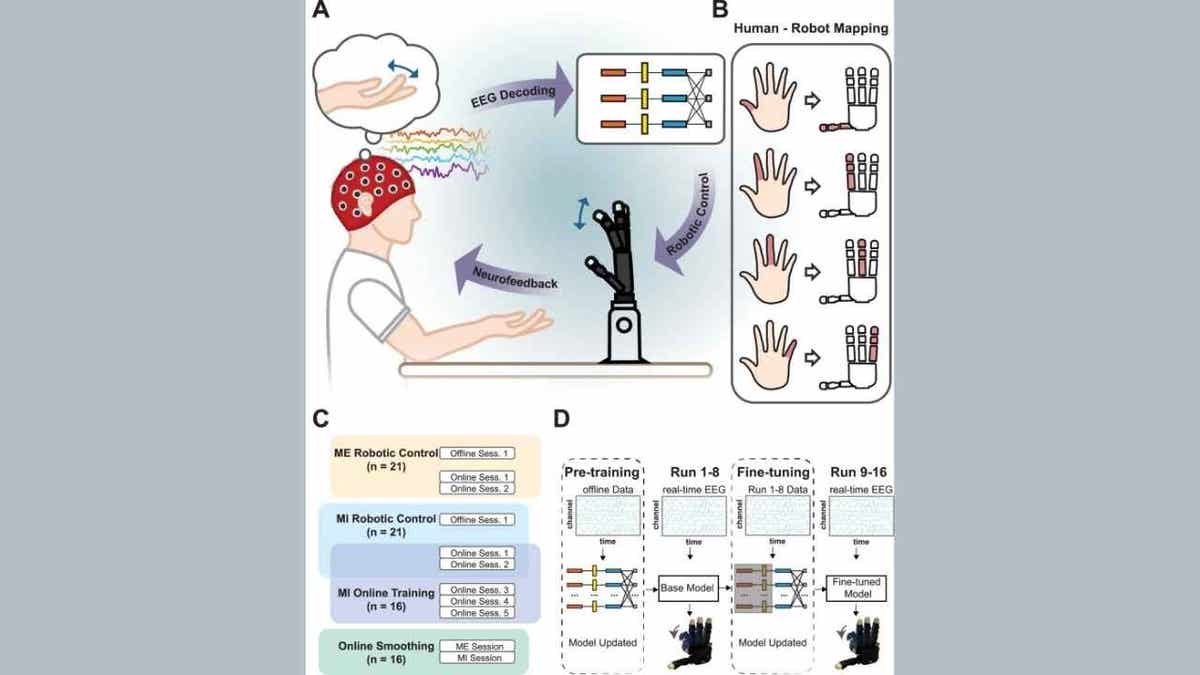Technology
Ransomware attack impacts 237,000 Comcast customers

U.S. telecom giant Comcast as well as Truist Bank and Capio & CF Medical are the latest companies to be hit with a data leak, but it’s not their fault. The data leak stems from the Financial Business and Consumer Solutions (FBCS) breach in February. Some 237,000 Comcast customers’ personal information was exposed, including people’s names, addresses, Social Security numbers, birth dates as well as Comcast account and ID numbers.
GET SECURITY ALERTS, EXPERT TIPS – SIGN UP FOR KURT’S NEWSLETTER – THE CYBERGUY REPORT HERE
Comcast is a major cable and internet provider. (Comcast)
What you need to know
A data breach has exposed the names, addresses, Social Security numbers and birth dates of more than 237,700 Comcast customers, according to a filing with the state of Maine on Friday, as reported by BleepingComputer. The breach stems from a security incident at Financial Business and Consumer Solutions (FBCS), a Pennsylvania-based debt collection agency previously used by Comcast.
FBCS first informed Comcast in March that the security incident did not involve any customer data. However, in July, FBCS notified the telecom giant that its customer data had, in fact, been compromised, stating that an “unauthorized party downloaded data from FBCS systems and encrypted some systems as part of a ransomware attack.”
The stolen data belongs to customers who signed up “around 2021,” Comcast says, adding that it stopped using FBCS for debt collection in 2020. FBCS hasn’t shared the details of its security incident yet, but Comcast’s filing confirms it was a ransomware attack, a type of cyberattack where hackers hold the data and demand a ransom to either delete it or give it back.

Ransomware after data breaches are becoming more common. (Kurt “CyberGuy” Knutsson)
MASSIVE FREE VPN DATA BREACH EXPOSES 360 MILLION RECORDS
The FBCS attack that started it all
As I reported back in June, the FBCS cyberattack happened on Feb. 14 when hackers accessed the company’s systems. FBCS didn’t realize there had been a breach until Feb. 26, and when it did, it described the incident as “unauthorized access to certain systems in its network.”
Initially, the company estimated that around 1.9 million people were affected, but that number jumped to 4 million in June 2024. The data breach leaked a massive amount of consumer information, including full names, Social Security numbers, birth dates and driver’s license or ID card numbers.
Since FBCS provides services to multiple companies, their customers’ data got mixed up in the leak. So, even if you have nothing to do with FBCS, your info might still be out there. Along with Comcast, Truist Bank – one of the largest banks in the U.S. – and CF Medical, a medical debt-purchasing company known as Capio, have also been affected. As a result of this incident, Comast is offering credit monitoring for one year to customers who were affected.

HERE’S WHAT RUTHLESS HACKERS STOLE FROM 110 MILLION AT&T CUSTOMERS
6 ways to protect yourself from data breaches
If you’ve been affected by the Comcast breach, follow these steps to protect your personal data and privacy.
1) Invest in identity theft protection: If you think your personal data has been leaked, scammers may try to impersonate you to gain access to your private information. The best thing you can do to protect yourself from this type of fraud is to subscribe to an identity theft service.
Identity theft companies can monitor personal information like your Social Security number, phone number and email address and alert you if it is being sold on the dark web or being used to open an account. They can also assist you in freezing your bank and credit card accounts to prevent further unauthorized use by criminals. See my tips and best picks on how to protect yourself from identity theft.
3) Be cautious of phishing attempts: Be vigilant about emails, phone calls or messages from unknown sources asking for personal information. Avoid clicking on suspicious links or providing sensitive details unless you can verify the legitimacy of the request. The best way to safeguard yourself from malicious links that install malware, potentially accessing your private information, is to have antivirus software installed on all your devices. This protection can also alert you to phishing emails and ransomware scams, keeping your personal information and digital assets safe. Get my picks for the best 2024 antivirus protection winners for your Windows, Mac, Android and iOS devices.
4) Check Social Security benefits: It is crucial to periodically check your Social Security benefits to ensure they have not been tampered with or altered in any way, safeguarding your financial security and preventing potential fraud.
5) Beware of snail mail: With all the data leaks happening, it’s more important than ever to keep an eye on your physical mail. Hackers can get their hands on sensitive information, and that can lead to identity theft or fraud. Be on the lookout for any unexpected letters or packages, especially if they ask for personal info or seem suspicious.
6) Invest in a data removal service: Consider using a data removal service that specializes in eliminating your personal information from online databases and people-search websites. These services can help reduce your digital footprint and make it more difficult for identity thieves to access your information. By proactively removing your data from public view, you can enhance your privacy and security in the wake of a breach like the one experienced by Comcast.
These services do all the work for you by actively monitoring and systematically erasing your personal information from hundreds of websites. It’s what gives me peace of mind and has proven to be the most effective way to erase your personal data from the internet. By limiting the information available, you reduce the risk of scammers cross-referencing data from breaches with information they might find on the dark web, making it harder for them to target you. Check out my top picks for data removal services here.
WORLD’S LARGEST STOLEN PASSWORD DATABASE UPLOADED TO CRIMINAL FORUM
Kurt’s key takeaway
The FBCS data breach affected Comcast, Truist and CF Medical, and these are just the names we know of. The total number of affected users is above four million, which means we might hear of more companies whose customers’ data has been leaked due to FBCS. Since it’s a ransomware attack, FBCS might have to pay the hackers a hefty ransom to get the data back or deleted; otherwise, it could end up in the hands of dark web scammers and other data aggregators.
Do you think companies like FBCS should be held accountable for breaches that affect their clients’ customers? Let us know by writing us at Cyberguy.com/Contact.
For more of my tech tips and security alerts, subscribe to my free CyberGuy Report Newsletter by heading to Cyberguy.com/Newsletter.
Ask Kurt a question or let us know what stories you’d like us to cover.
Follow Kurt on his social channels:
Answers to the most asked CyberGuy questions:
New from Kurt:
Copyright 2024 CyberGuy.com. All rights reserved.
Technology
Here are 58 Prime Day deals you can still nab for $50 or less

Amazon Prime Day is an excellent time to save on a wide range of big-ticket items, including 4K TVs, laptops, and the latest pairs of noise-canceling headphones. But if you, like me, are in the market for something more budget-friendly, rest assured that there are plenty of deals to be had for $50 or less. Thankfully, we’ve sifted through hundreds of discounts to find a host of Bluetooth speakers, charging accessories, video games, smart home devices, and other gadgets that come in under that threshold. It’s the final day of Prime Day, which means these deals aren’t going to be available for much longer.
While Prime Day 2025 runs a little longer than previous installments — the event lasts through July 11th this year — these sub-$50 deals might sell out quickly. The good news is retailers such as Walmart and Best Buy are matching Amazon’s pricing in some instances, giving you more places to shop over the next few days. We’ll continue to update this post as Prime Day progresses, but for now, feel free to browse the options below.
Headphone and earbud deals
Other miscellaneous deals
Update, July 11th: Adjusted to reflect current pricing and availability, and to provide a link for readers to our coverage of Prime Day day four.
Technology
Noninvasive brain tech and AI moves robotic hand with thought

NEWYou can now listen to Fox News articles!
Noninvasive brain tech is transforming how people interact with robotic devices. Instead of relying on muscle movement, this technology allows a person to control a robotic hand by simply thinking about moving his fingers.
No surgery is required.
Instead, a set of sensors is placed on the scalp to detect brain signals. These signals are then sent to a computer. As a result, this approach is safe and accessible. It opens new possibilities for people with motor impairments or those recovering from injuries.
Sign up for my FREE CyberGuy Report
Get my best tech tips, urgent security alerts and exclusive deals delivered straight to your inbox. Plus, you’ll get instant access to my Ultimate Scam Survival Guide — free when you join my CYBERGUY.COM/NEWSLETTER
PARALYZED MAN SPEAKS AND SINGS WITH AI BRAIN-COMPUTER INTERFACE
A woman wearing non-invasive brain technology (Carnegie Mellon University)
How noninvasive brain tech turns thought into action
Researchers at Carnegie Mellon University have made significant progress with noninvasive brain technology. They use electroencephalography (EEG) to detect the brain’s electrical activity when someone thinks about moving a finger. Artificial intelligence, specifically deep learning algorithms, then decodes these signals and translates them into commands for a robotic hand. In their study, participants managed to move two or even three robotic fingers at once, just by imagining the motion. The system achieved over 80% accuracy for two-finger tasks. For three-finger tasks, accuracy was over 60%. All of this happened in real time.
WHAT IS ARTIFICIAL INTELLIGENCE (AI)?
Meeting the challenge of finger-level control
Achieving separate movement for each robotic finger is a real challenge. The brain areas responsible for finger movement are small. Their signals often overlap, which makes it hard to distinguish between them. However, advances in noninvasive brain technology and deep learning have made it possible to pick up on these subtle differences.
The research team used a neural network called EEGNet. They fine-tuned it for each participant. Because of this, the system allowed for smooth, natural control of the robotic fingers. The movements closely matched how a real hand works.

A robotic finger being controlled by non-invasive brain technology (Kurt “CyberGuy” Knutsson)
Why noninvasive brain tech matters for everyday life
For people with limited hand function, even small improvements can make a huge difference. Noninvasive brain technology eliminates the need for surgery because the system is external and easy to use. In addition, this technology provides natural and intuitive control. It enables a person to move a robotic hand by simply thinking about the corresponding finger movements.
The accessibility of noninvasive brain technology means it can be used in clinics and homes and by a wide range of people. For example, it enables participation in everyday tasks, such as typing or picking up small objects that might otherwise be difficult or impossible to perform. This approach can benefit stroke survivors and people with spinal cord injuries. It can also help anyone interested in enhancing their abilities.
What’s next for noninvasive brain tech?
While the progress is exciting, there are still challenges ahead. Noninvasive brain technology needs to improve even further at filtering out noise and adapting to individual differences. However, with ongoing advances in deep learning and sensor technology, these systems are becoming more reliable and easier to use. Researchers are already working to expand the technology for more complex tasks.
As a result, assistive robotics could soon become a part of more homes and workplaces.

Illustration of how the noninvasive brain technology works (Carnegie Mellon University)
Kurt’s key takeaways
Noninvasive brain technology is opening up possibilities that once seemed out of reach. The idea of moving a robotic hand just by thinking about it could make daily life easier and more independent for many people. As researchers continue to improve these systems, it will be interesting to see how this technology shapes the way we interact with the world around us.
If you had the chance to control a robotic hand with your thoughts, what would you want to try first? Let us know by writing us at Cyberguy.com/Contact
Sign up for my FREE CyberGuy Report
Get my best tech tips, urgent security alerts and exclusive deals delivered straight to your inbox. Plus, you’ll get instant access to my Ultimate Scam Survival Guide — free when you join my CYBERGUY.COM/NEWSLETTER
Copyright 2025 CyberGuy.com. All rights reserved.
Technology
YouTube’s ‘Trending’ section is about to disappear

YouTube is preparing to sunset the Trending section that shows users which videos are currently going viral on the platform. The Trending page and Trending Now list will be removed within the “next couple of weeks,” according to YouTube, with the platform instead shifting its attention toward expanding YouTube Charts that rank top-performing content.
YouTube is directing users to lean on personalized recommendations and YouTube Charts to explore new videos ahead of the Trending page removal. YouTube Charts allow users to see the most popular content for specific categories, which currently includes music videos, podcasts, and movie trailers. The platform says that it will add more content category charts “over time,” and that trending gaming videos can still be found under the Gaming Explore page in the meantime.
“Back when we first launched the Trending page in 2015, the answer to ‘what’s trending’ was a lot simpler to capture with a singular list of viral videos that everyone was talking about,” the company said in a blog post. “But today, trends consist of many videos created by many fandoms, and there are more micro-trends enjoyed by diverse communities than ever before.”
Viewers now learn about viral video trends from a variety of different sources, including Shorts, search suggestions, and other platforms like TikTok, which YouTube says has significantly reduced Trending page traffic, “especially over the last five years.” Creators have also criticized YouTube for demanding far higher viewership numbers to appear in the Trending section compared to branded accounts that post movie trailers, TV clips, and other traditional media, suggesting the experience doesn’t entirely reflect what videos are actually popular on the platform.
Creators who use the Trending page to research video ideas are being directed to instead use the Inspiration Tab in YouTube Studio, which provides AI-generated content suggestions. YouTube also says it’s working on new ways to help boost discovery for up-and-coming creators on the platform, such as the Hype promotional system it released last year that lets viewers amplify videos to a platform-wide leaderboard.
-

 Business1 week ago
Business1 week agoSee How Trump’s Big Bill Could Affect Your Taxes, Health Care and Other Finances
-

 Culture1 week ago
Culture1 week ago16 Mayors on What It’s Like to Run a U.S. City Now Under Trump
-

 Politics7 days ago
Politics7 days agoVideo: Trump Signs the ‘One Big Beautiful Bill’ Into Law
-

 News1 week ago
News1 week agoVideo: Who Loses in the Republican Policy Bill?
-

 Science1 week ago
Science1 week agoFederal contractors improperly dumped wildfire-related asbestos waste at L.A. area landfills
-

 Technology1 week ago
Technology1 week agoMeet Soham Parekh, the engineer burning through tech by working at three to four startups simultaneously
-

 Politics1 week ago
Politics1 week agoCongressman's last day in office revealed after vote on Trump's 'Big, Beautiful Bill'
-

 World7 days ago
World7 days agoRussia-Ukraine war: List of key events, day 1,227
















